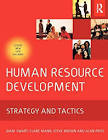|
The Trainers HandbookChapter 5 - Evaluating Your EffectivenessTRAINING is the business of bringing about change. To know whether you have achieved change, you must be able to evaluate the effects of your instruction. Youve defined your objectives and determined what the change should be. Youve assessed the present status and have a program for changing it to meet those objectives. Now you need a means of measuring the success youve achieved. This last step is evaluation. There are three levels of change in performance that must be monitored and evaluated. Level one is the measurement of how well the trainees can perform the skills you have been communicating to them. It takes place during and upon completion of training. Level two is the observation of the trainees performance when they return to the job. It is a measure of what theorists call the transfer of learning to the workplace. You know from level one evaluation how well each of the trainees is able to perform the skills youve taught. Now you must follow up and observe whether or not they are actually transferring those skills to their jobs. If they are not doing so, you will need to perform a narrow-focused needs analysis in order to troubleshoot the problem, diagnose it, and propose a solution. Level three is a measurement of the impact of the training on the operations of the department for which you have performed the training or, indeed, on the entire organization. It is a measurement of the dollar return on the money investment by management in training. Level three is the bottom-line evaluation. It answers the question Are we getting our moneys worth out of training? As you can see, evaluation is an important ongoing function for the trainer. It is also a vital function for the trainees. If you remember, one of Thorndikes principles of learning is the law of effect: nothing succeeds like success. Trainees must get constant feedback to develop the motivation to continue. Constant evaluation not only lets you know where you are, but it also does the same for your trainees. For convenience, the evaluation function has been divided into several operations, but there is considerable overlap and much mixing of technique. It is likely that you will be using several methods at the same time.
Level One: Short-Term Evaluations Level one evaluation consists mainly of short-term projects with which we are most familiar. Homework assignments, class projects, term papers, and tests are the forms of evaluation we all remember from school. This level of evaluation usually consists of some challenging task set by the instructor and performed by the student. How well the student performs the task is the measure of his or her success at learning it. The task provides the learner with necessary feedback on how well he or she is learning. At the same time, it provides the instructor with feedback on how well the learner is mastering the skills being taught and what coaching, if any, will be required. Incidentally, it also provides feedback on the instructors success at teaching the material.
Exams and Tests Many people dread exams because, when they were in school, the results were associated with passing or failing. Since exams were the basis for vital judgments affecting our future, it isnt surprising that exams are thought of as almost punitive to some of us. You will have to reposition the purpose and function of exams to show your trainees how tests let them know how they are doing. Let exams be a service to them, a diagnostic tool to point out strengths and weaknesses. The fact that you can also use them to evaluate yourself is really immaterial. Tests exist solely for them, to provide important feedback. Well talk about how to structure those tests later in this chapter.
Alternative Types of Evaluation There are, however, several other types of short-term evaluations. They range from observational techniques, such as eye contact, to various types of projects and reviews. Lets take a quick look at them, then discuss in detail how to create and use each one as an evaluation tool.
Methods for Short-Term Evaluations
Interpreting Eye Contact
Excerpts from Chapter 5, The Trainer's Handbook
© 1998, 1993, 1987 AMACOM, a division of American Management Association, New York. All rights reserved. Published by AMACOM Books http://www.amacombooks.org Division of American Management Association 1601 Broadway, New York, NY 10019 Customer Service: 1-800-262-9699 More learning articles: |
|
|
|
|
|
|
|
|
|
|
|
| Copyright © 2000-2006 Alan Price and BestBooks.biz contributors. All rights reserved. |


